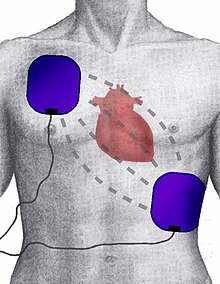Audit: Calif. fire dept. failed to document medic program
 |
| Defibrillator |
The audit criticized medics for failing to complete medical records after delivering emergency care and directs officials to launch a retraining effort
Los Angeles Times
COMPTON, Calif. — The Compton Fire Department has failed to properly document emergency medical care and monitor the training and performance of the city rescuers who respond to 911 calls for help, according to a confidential audit obtained by The Times.
The six-page audit, delivered to the department in February by county regulators, follows a series of Times reports on breakdowns at the fire agency that prompted city leaders to launch an investigation and place the department's chief on leave.
The audit criticized Compton paramedics for failing to complete nearly a dozen different types of medical records after delivering emergency care and directs top department officials to launch a broad retraining effort.
The fire agency was also cited for failing to follow rules designed to identify poor performing medics so they can be retrained or potentially disciplined.
“As a department, we've become a little relaxed,” said Bryan Batiste, who was appointed interim fire chief last week. “The oversight just needs to be stronger. Everybody has to do their job or else.”
Compton's previous chief, Jon Thompson, was placed on leave last week after the disclosure that some city firetrucks and ambulances were stripped of defibrillators, a crucial lifesaving device that rescuers use to deliver a shock to try to restart the heart of a cardiac arrest victim.
County regulators forced fire officials to remove the machines after the city was unable to produce documentation showing that firefighters had been properly trained to use the equipment.
That decision followed a Times report in March that nearly one in four Compton firefighters lacked a permit to perform emergency medical care, a key credential required by other local fire agencies.
Batiste said he submitted paperwork on Monday to begin the process of restoring the defibrillators.
He said he also plans to use city funds to hire a nurse to begin the work of rebuilding the agency's oversight and retraining program, which he said was hampered by budget cuts in recent years.
“We'll get there one way or the other,” he said.
Last week city leaders said a retired fire chief, Rico Smith, would lead an effort to fix the department's problems.
But hiring rules prevented Smith from being appointed while Thompson is on leave pending the city investigation, officials said. Smith may now act as a consultant to the department, according to Batiste.
The audit was conducted by Los Angeles County's Emergency Medical Services Agency, which oversees 911 care in the area. Each year its investigators review local fire departments that respond to calls for medical help.
The reports are not routinely published and officials consider them exempt from disclosure under California's public records law.
“Being open, it would harm this process,” said Cathy Chidester, the head of the county oversight agency.
Chidester said her agency lacks the legal authority to make investigations mandatory and that publicizing negative results could discourage participation.
“We try not to be controversial with the departments,” she said. “We would get much more pushback on our audits about what they would allow us to look at or not look at.”
Choosing to keep the audits secret is legal under state law, according to Peter Scheer, head of First Amendment Coalition, a group advocating for greater opening of government. But nothing prevents agencies from voluntarily releasing the reports, he said.
“Given that these services are largely paid for by local taxpayers, EMS agencies should release the audits, or information and recommendations from them, whenever they can,” Scheer said.
Defibrillation
From Wikipedia, the free encyclopedia
Defibrillation is a common treatment for life-threatening cardiac dysrhythmias and ventricular fibrillation. Defibrillation consists of delivering a therapeutic dose of electrical energy to the heart with a device called a defibrillator. This depolarizes a critical mass of the heart muscle, terminates the dysrhythmia and allows normal sinus rhythm to be reestablished by the body's natural pacemaker, in the sinoatrial node of the heart. Defibrillators can be external, transvenous, or implanted(implantable cardioverter-defibrillator), depending on the type of device used or needed. Some external units, known as automated external defibrillators (AEDs), automate the diagnosis of treatable rhythms, meaning that lay responders or bystanders are able to use them successfully with little or no training at all.
Copyright 2015 Los Angeles Times
All Rights Reserved
Source article: http://www.firerescue1.com/Firefighter-Training/articles/2870661-Audit-Calif-fire-dept-failed-to-document-medic-program/?

No comments:
Post a Comment
CAL FIRE NEWS LOVES COMMENTS...
- Due to rampant abuse, we are no longer posting anonymous comments. Please use your real OpenID, Google, Yahoo, AIM, Twitter, Flickr name.